
Should Calculators Be Allowed in Math Class?
Do they improve the classroom experience or interfere with learning? Here’s how to decide if calculators should be allowed in your math class.
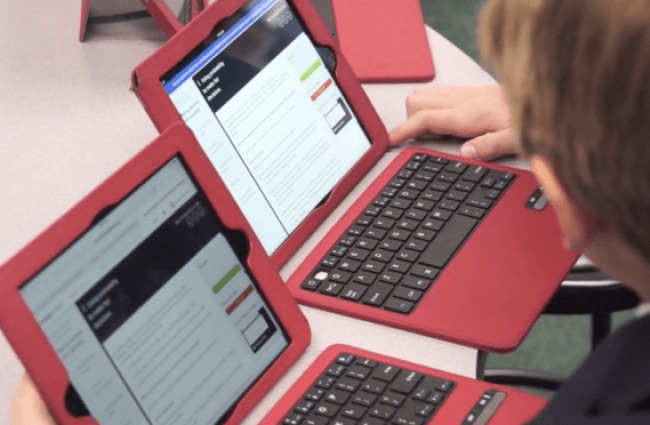
In parts 1 and 2, we looked how to get started collecting data for DDI and then how to use that data to plan for whole and small group lessons. In this third and final section, we’ll consider ways to use data and data-driven platforms to personalize instruction for individual students. Here I’ll focus on the cycle of using individual student results to generate data that will help us in personalizing our instruction and support.
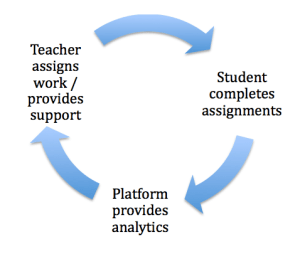
In Part One, we considered that before we can use data to guide instruction, we must generate that data. Unless you are willing to enter student responses into a computer, that means students must complete problem sets on an online platform. Typically, the students who would benefit most from DDI are those who are having difficulty keeping up with the class. Unfortunately, these are also the students who are less likely to complete independent work. Here are some best practices for getting a data set that will help you gauge student understanding:
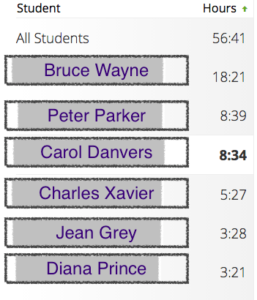
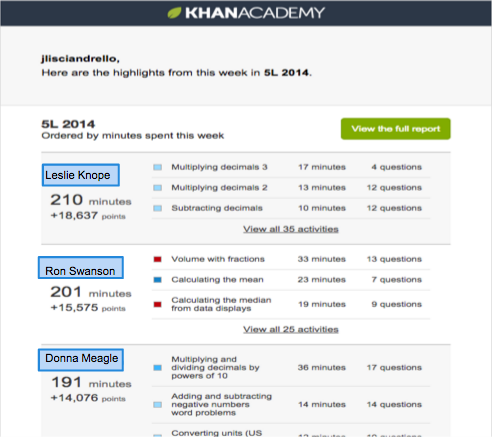
Once you have gathered an initial set of data, you can start to identify areas where personalized instruction is needed. Once upon a time we had to spend the better part of a class period (or more) lecturing an entire class about plurals and possessives. Some of our students already knew the difference. Others were daydreaming and still couldn’t tell the difference after the lectures. Today, we can look at something like the image below before we start teaching. If you saw this, how might it affect the way you approach the subject with your class?
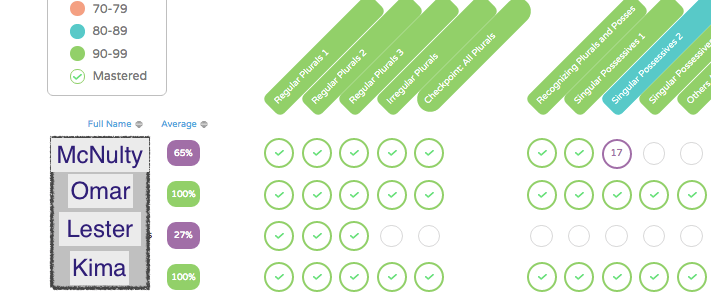
I would see that Omar and Kima are ready for the next lesson without any direct instruction. Lester might need a nudge, because he just hasn’t completed the work. I can see that McNulty has gotten hung up on “Singular Possessives 2,” so I would give him a quick tutoring session before asking him to move on.
One reason that games are so exciting is the ability for players to advance to higher levels once a lower level is mastered. To me, the most powerful aspect of DDI is the ability for students to progress at their own pace. Adaptive platforms will automatically progress students to harder material once they have demonstrated mastery, but there are often cases where, as the teacher, you will have a different (often better) idea of where your student should go next. How could the screenshot below help you in guiding this student’s learning?
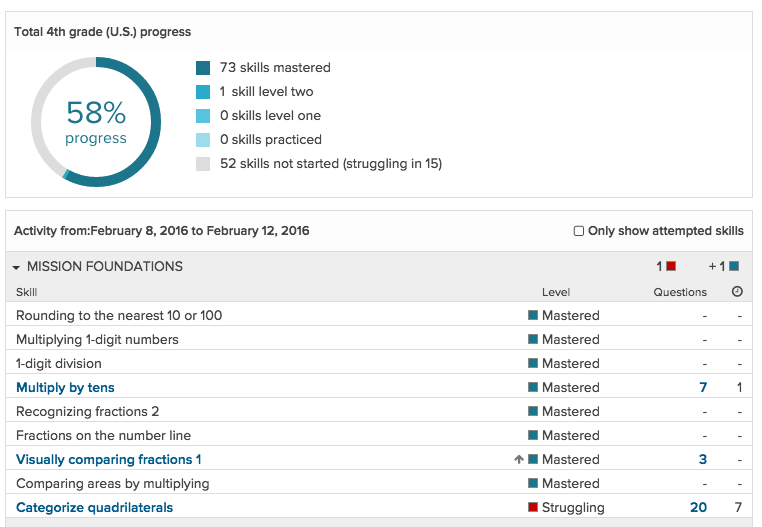
I notice this student has completed 58% of 4th grade. I also notice they have mastered all of the “foundations” except categorizing quadrilaterals. If this were an advanced third grade student or a grade level 4th grade student, I might have a one-on-one session to discuss quadrilaterals.
If it were a 5th or 6th grade student, I might decide that a higher priority is to build on their “foundations” in areas they have shown promise, such as fractions. In that case, I would likely assign the student more challenging fraction work, and only circle back to geometry once the student were on grade level with their arithmetic. I would likely also consider the student’s confidence and areas of interest – when a student is struggling, allowing them to work on topics that fit their interest or build their confidence can sometimes trump the need for more content coverage.
Get the support you need to bring personalized learning to your school:
Enroll in “Differentiate Your Math Class with Khan Academy”
Watch this free video tutorial on Khan Academy Basics
Contact me to schedule a consultation
This three part post on Data-Driven Instruction is by no means a comprehensive guide to DDI. My goal was to share some highlights from my experiences with data, give some insight into why data is helpful, and offer a few tips to help you get started. I hope my experiences will allow some of you to take the first step of gathering data. Remember that the data you gather and the way you use it will depend on the needs of you and your students – the most important part is to get started, as you will likely discover uses for data that neither of us could ever have imagined.
I would love to hear back from educators who have recently begun using data in their classes or who are thinking of trying it out. Please share your thoughts, your questions or your success stories. Get in touch.

Do they improve the classroom experience or interfere with learning? Here’s how to decide if calculators should be allowed in your math class.

See the animated visual models my students made, and follow in my footsteps as I plan and facilitate a project-based math unit.

Collaboration and active learning are just two signs of a student-centered classroom. How many of these six signs are present in your classroom?